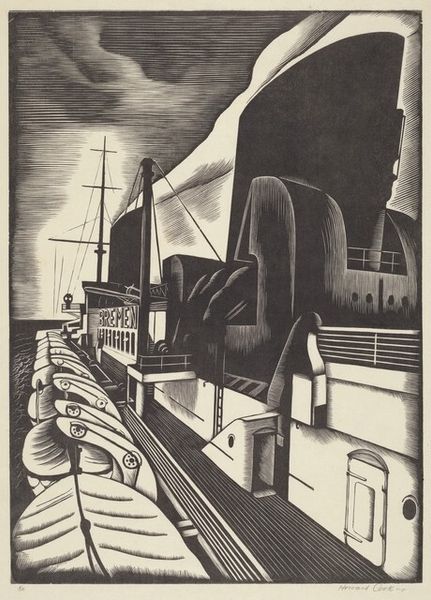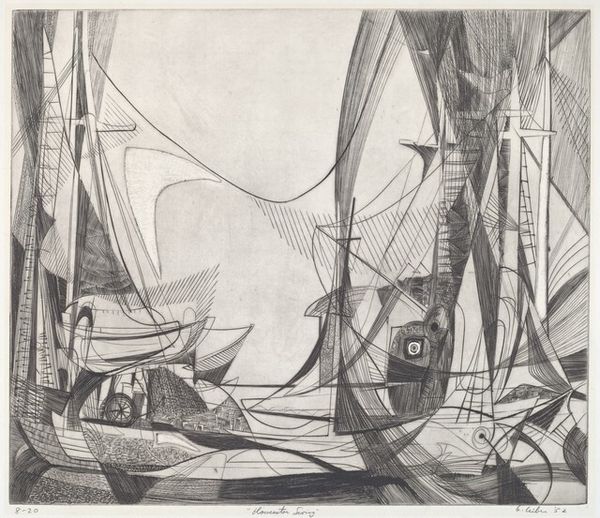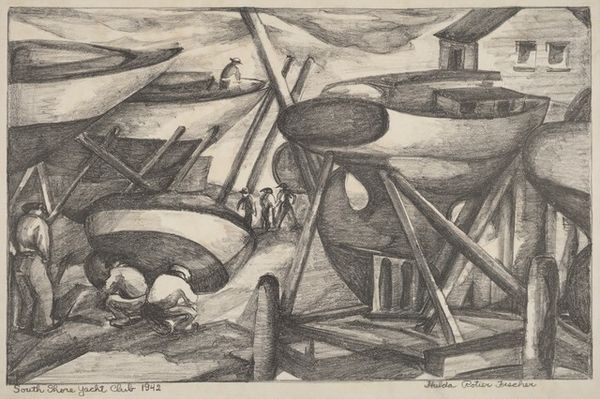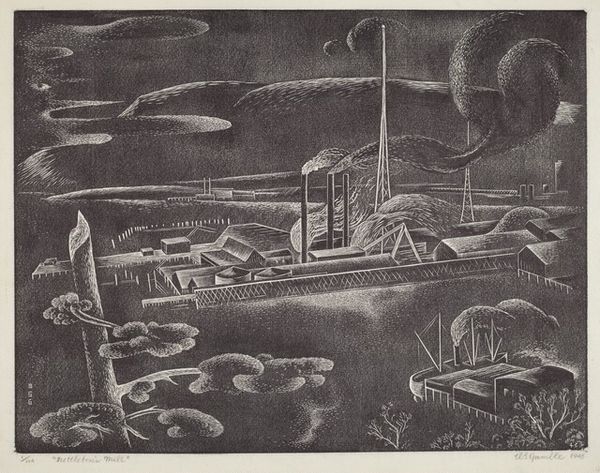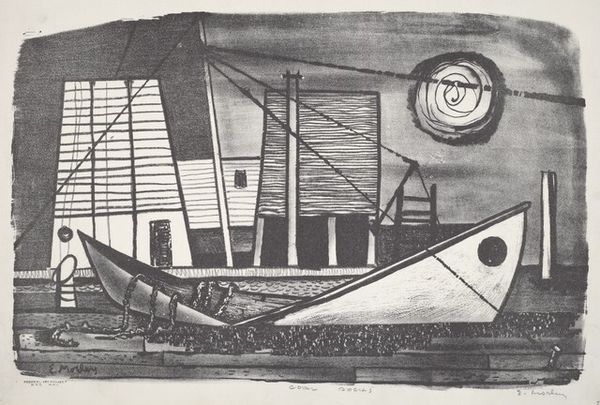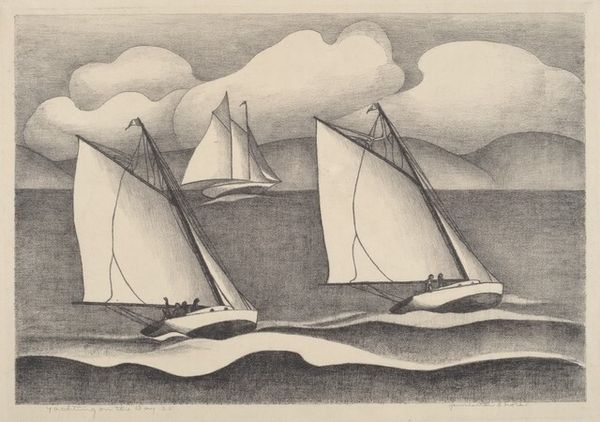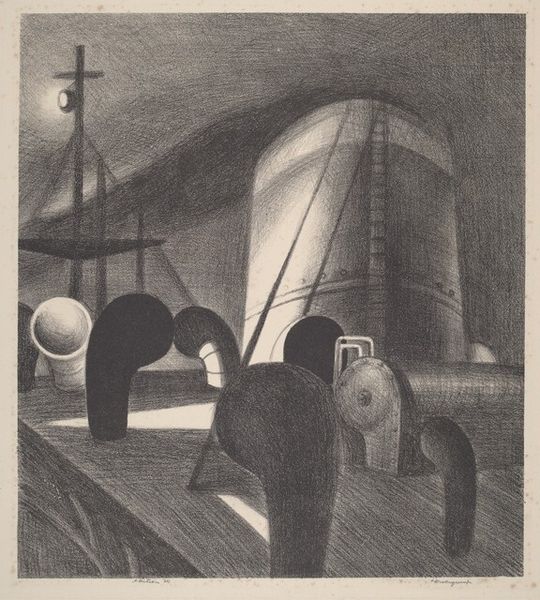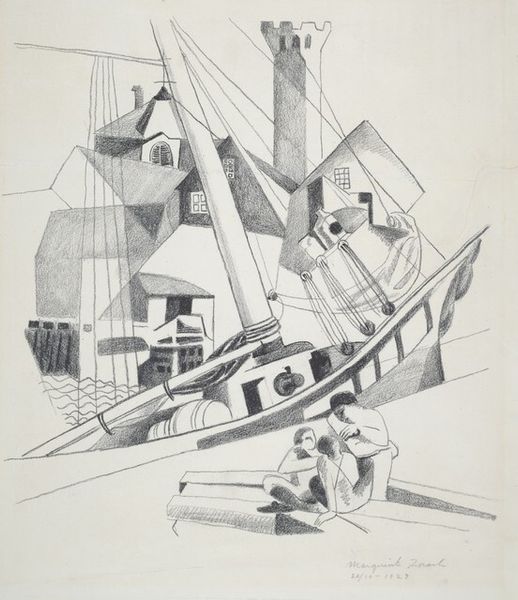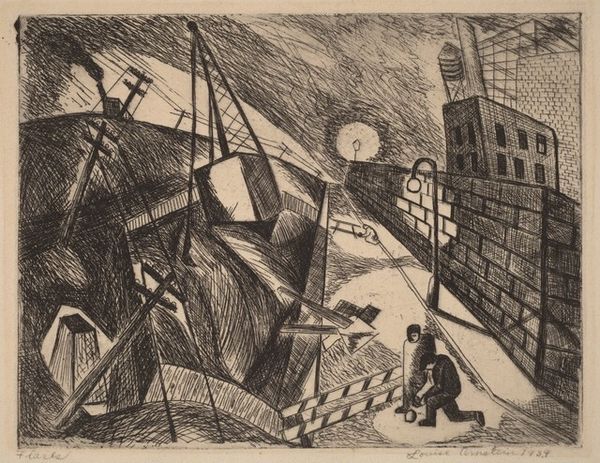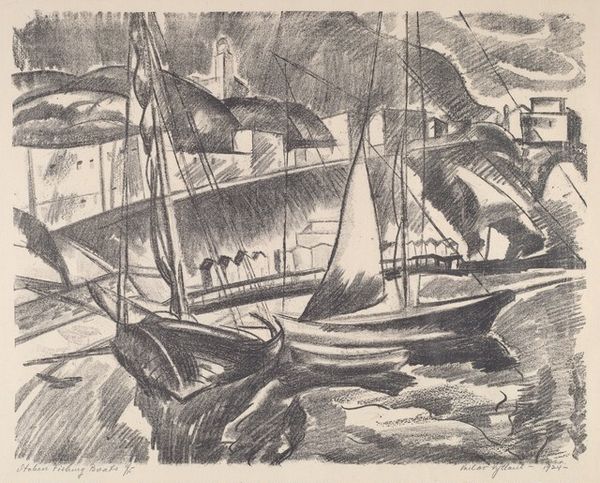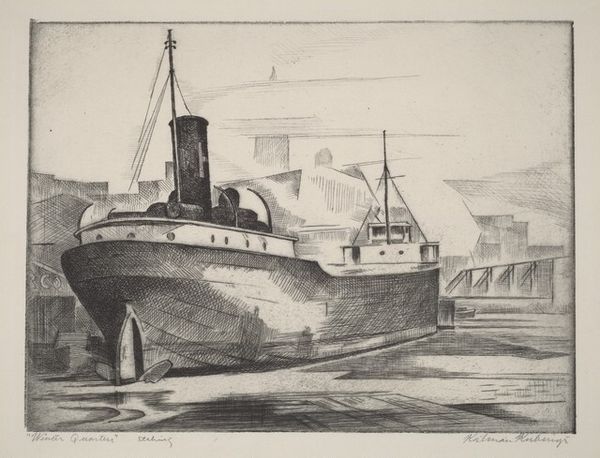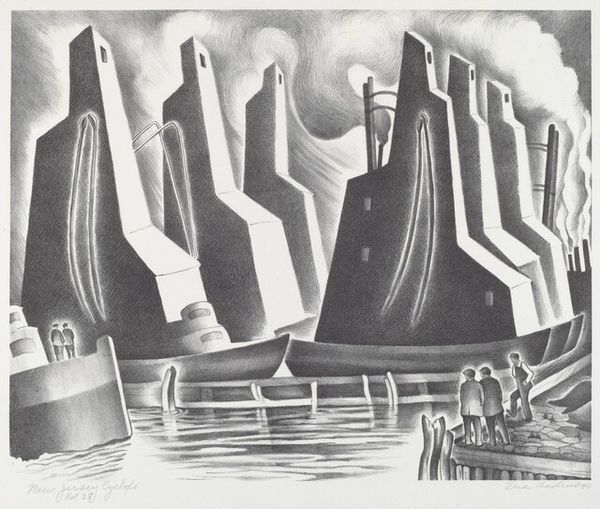
drawing, print, graphite
#
drawing
# print
#
graphite
#
cityscape
#
realism
Dimensions: image: 34.9 × 30.2 cm (13 3/4 × 11 7/8 in.)
Copyright: National Gallery of Art: CC0 1.0
Curator: Vera Andrus created this striking cityscape in 1935. The work, titled "Last Port of Call," is rendered with graphite in a detailed print. Editor: Immediately, I'm struck by the contrast, both literal and perhaps metaphorical. The massive ships seem still and imposing. There's a quiet tension, maybe even a feeling of being trapped. Curator: The composition does create that feeling, doesn’t it? The artist has positioned the viewer within the harbor space, dwarfed by these colossal vessels. I'm fascinated by the realism of the style she adopted and by her depiction of urban and industrial scenes, quite different from landscape painting, so trendy at the time. The fact that the image is grayscale really helps give a certain tone of industrial dreariness. Editor: I think that positioning is key. By placing us so close, we are forced to confront the scale and the weight of these ships, making it difficult to escape their impact. Think of the era too – the Great Depression. Ports, traditionally associated with departures and new beginnings, here suggest stillness, a world stuck in place. Curator: Precisely! Andrus was working during a period when the role of art in reflecting social realities was heavily debated. There were even arguments around how the government could support artists that are helping depict those themes and sentiments to the general public through the WPA, so this print could be understood in the larger context of depicting labor, industry, and perhaps even stagnation during the Depression. Editor: Yes, these vessels become symbols. They could be interpreted not just as objects, but also as representing the unfulfilled potential and the weight of economic hardship on individual lives. The anchors hanging inert could be viewed as people trapped in this landscape. The very fact that is named "Last Port of Call" already predisposes to think about this feeling! Curator: That title certainly lends itself to such interpretations. The perspective has indeed expanded for me. Editor: It does for me too. It pushes us to contemplate the personal stories behind these massive structures, asking us to reflect upon society during that historical moment.
Comments
No comments
Be the first to comment and join the conversation on the ultimate creative platform.
